Mardi Gras Decoration
What Is the Religious Significance of Mardi Gras?
2025

Mardi Gras, resembling a vibrant tapestry interwoven with tradition and spirituality, carries a more profound religious meaning than commonly depicted in mainstream culture. Despite the association of Mardi Gras with extravagant parades, colorful costumes, and lively parties, there exists a deep historical background and religious symbolism that form the foundation of this festive event.
As we explore the origins of Mardi Gras and its Christian roots, we will uncover the deeper layers of meaning behind this annual event, shedding light on its religious observances and spiritual reflections that continue to shape its practices today.
Key Takeaways
- Mardi Gras originated from the Christian tradition of feasting before Lent and is deeply rooted in the Christian celebration of Lent.
- Fat Tuesday symbolizes excess and indulgence before the fasting and penitential practices of Lent, serving as a reminder of the need for balance and spiritual growth.
- Mardi Gras marks the transition from indulgence to introspection in preparation for Lent and encourages individuals to reflect on their spiritual journey and make personal sacrifices.
- Mardi Gras is intricately linked to the religious fasting tradition observed during Lent and serves as the final day of indulgence before the solemn observance of Lent.
Origins of Mardi Gras
Mardi Gras, with its origins dating back to medieval Europe, is a festive celebration that carries deep religious and cultural significance. The origins of Mardi Gras can be traced to ancient pagan celebrations such as the Roman festivals of Saturnalia and Lupercalia, as well as the medieval Christian tradition of feasting before the Lenten fast. Over time, these diverse influences merged to form the modern-day Mardi Gras.
Culturally, Mardi Gras represents a culmination of various traditions brought to the United States by French and Spanish settlers in the 18th century. The celebration evolved to include elements of masquerade balls, street processions, and lavish feasting. This cultural amalgamation has contributed to the rich tapestry of Mardi Gras, making it an important part of the cultural heritage of New Orleans and other regions with strong ties to French and Spanish colonial history.
The religious significance of Mardi Gras is closely tied to its origins as a Christian festival marking the last day before the fasting period of Lent. It's a time of revelry and indulgence before the solemnity of the Lenten season, emphasizing the contrast between worldly pleasures and spiritual discipline. This duality is at the heart of the religious symbolism of Mardi Gras, making it a complex and deeply meaningful celebration.
Christian Roots
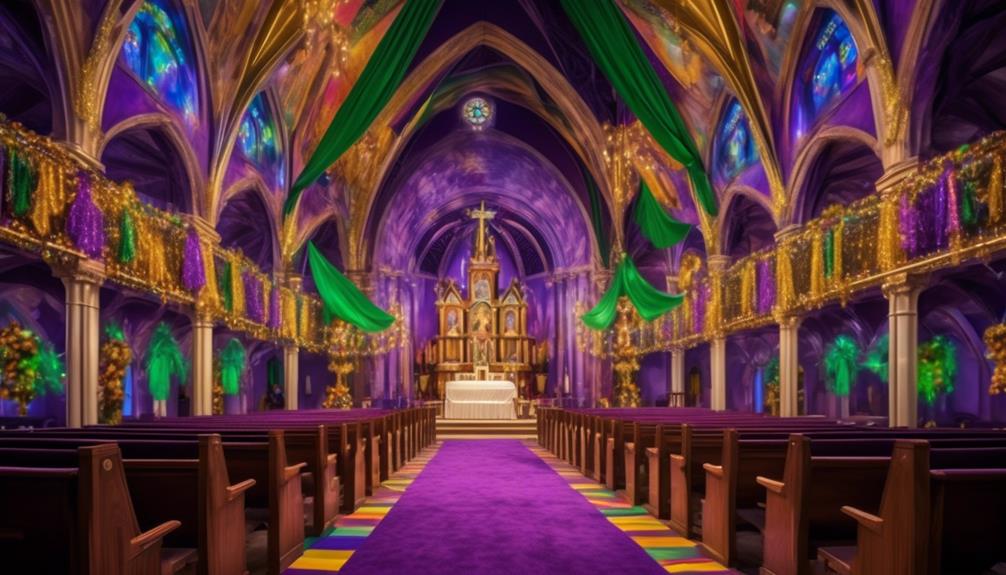
Examining the religious significance of Mardi Gras requires delving into its Christian roots, which provide insights into the festival's historical and spiritual underpinnings. Mardi Gras, also known as Shrove Tuesday or Fat Tuesday, is deeply rooted in the Christian celebration of Lent. Its historical significance lies in its role as the culmination of the Carnival season, a period of revelry and indulgence before the solemnity of Lent.
In Christian tradition, Lent is a time of penance, reflection, and preparation for the Easter season, and Mardi Gras serves as a final opportunity for merrymaking before the observance of Lenten disciplines.
The Christian roots of Mardi Gras are evident in the religious practices and customs associated with the festival. Across many Christian denominations, Mardi Gras is observed with various rituals and ceremonies, such as the consumption of rich and indulgent foods, symbolizing the last moments of feasting before the fasting period of Lent begins. These traditions have been passed down through generations, contributing to the enduring historical significance of Mardi Gras as a Christian celebration.
Understanding the Christian roots of Mardi Gras provides a deeper appreciation for its historical and spiritual dimensions, enriching the overall experience of this festive occasion.
Shrove Tuesday Tradition
The tradition of Shrove Tuesday, also known as Pancake Day, has its origins in the Christian tradition of using up rich foods like eggs and milk before the fasting period of Lent. The word 'shrove' comes from the old English word 'shrive,' which means to confess. On this day, people confess their sins and receive absolution before the Lenten season begins.
The tradition of Shrove Tuesday has evolved over time, and today it's celebrated in various ways around the world. Some common customs include indulging in pancakes, participating in pancake races, and coming together for a community feast.
Pancake Races are a popular tradition in some communities. Participants race while flipping pancakes in a pan. This lighthearted and fun activity is a way to celebrate Shrove Tuesday and enjoy the last day of indulgence before the Lenten fast.
Many churches and community organizations host feasts or pancake breakfasts on Shrove Tuesday. These gatherings provide an opportunity for people to come together and enjoy a meal before the solemn period of Lent begins.
The act of consuming pancakes and engaging in communal activities on Shrove Tuesday symbolizes a sense of togetherness, indulgence, and preparation for the upcoming period of reflection and abstinence during Lent.
Symbolism of Fat Tuesday
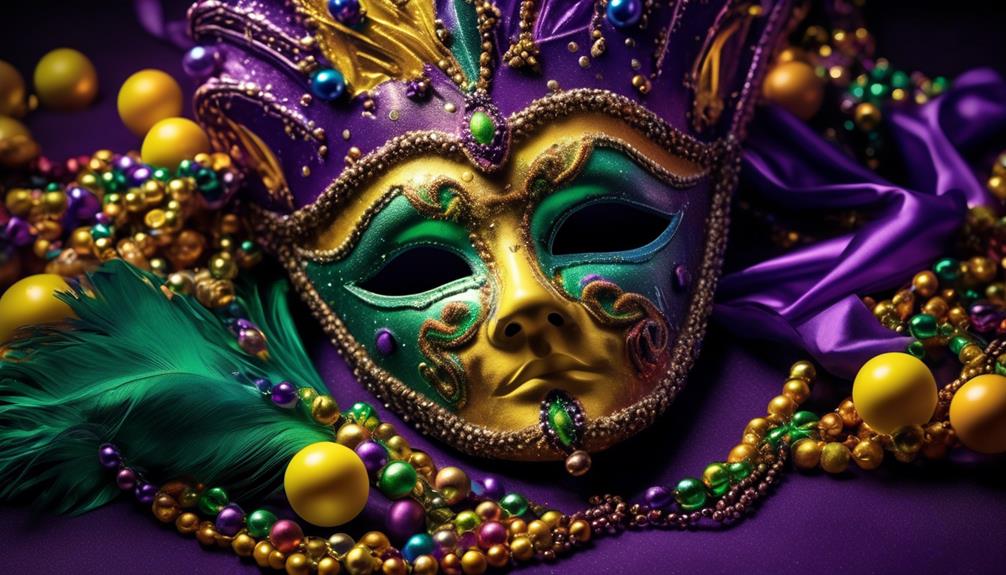
Fat Tuesday, also known as Mardi Gras, holds significant religious symbolism in its emphasis on excess and indulgence before the solemn period of Lent. This symbolism is rooted in the Christian tradition of preparing for the fasting and penitential practices of Lent by engaging in a day of feasting and revelry.
Understanding the religious significance of this day provides insights into the spiritual significance of the Mardi Gras celebration and its role in the broader context of the Christian liturgical calendar.
Religious Symbolism of Excess
In the religious context, Mardi Gras serves as a symbolic culmination of indulgence and excess before the solemn observance of Lent. This symbolism of excess holds religious significance, representing the need to engage in excessive celebration before the period of fasting and abstinence. It's a time to revel in earthly pleasures and worldly delights before turning inward and focusing on spiritual growth.
The religious symbolism of excess during Mardi Gras can be understood through the following aspects:
- Carnival Revelry: The excessive celebration during Mardi Gras signifies a temporary release from the constraints of everyday life.
- Feasting and Feasting: Indulging in rich and decadent foods symbolizes the enjoyment of earthly pleasures before the spiritual discipline of Lent.
- Extravagant Parades and Masquerades: The elaborate displays and disguises reflect the temporary abandonment of inhibitions and social norms, emphasizing the need for spiritual renewal.
This brief period of lavishness and revelry serves as a reminder of the balance between earthly pleasures and spiritual devotion.
Spiritual Preparation for Lent
The spiritual significance of Fat Tuesday lies in its role as a transitional period, marking the shift from indulgence to introspection in preparation for the Lenten season.
As we approach the culmination of Mardi Gras festivities, it becomes a time for spiritual reflection and contemplation. This period of cultural adaptations involves a conscious effort to move from the revelry of Mardi Gras to the solemnity of Lent.
It's a time for individuals to engage in introspective practices, seeking to cultivate a deeper connection with their spirituality. Through prayer, meditation, and acts of self-discipline, people prepare their hearts and minds for the upcoming Lenten period.
This spiritual preparation serves as a reminder of the need for inner contemplation and self-examination, fostering a sense of renewal and spiritual growth.
Religious Observances

Mardi Gras is celebrated with religious observances that hold profound significance within various Christian traditions, emphasizing the period of reflection and preparation leading up to the Lenten season. The religious practices during Mardi Gras are deeply rooted in the cultural significance of the event, with a focus on spiritual introspection and communal bonding. These observances vary across different regions and denominations, but they all share the common goal of honoring the religious aspects of the festival.
Here are three key religious observances that are integral to the Mardi Gras celebration:
- Ash Wednesday: Mardi Gras culminates on Ash Wednesday, marking the beginning of the Lenten season. This day is characterized by the distribution of ashes on the foreheads of the faithful, symbolizing repentance and mortality.
- Shrove Tuesday: Also known as Fat Tuesday, this day is a time for indulgence before the solemnity of Lent. It's a period of feasting and revelry, emphasizing the contrast between celebration and the austerity of the upcoming Lenten season.
- Lenten Sacrifices: Mardi Gras encourages individuals to reflect on their spiritual journey and make personal sacrifices during Lent, following the tradition of Jesus' 40-day fast in the wilderness. This period of self-discipline is considered a crucial part of the religious observances during Mardi Gras.
Mardi Gras and Lent

As we consider the religious significance of Mardi Gras, it's essential to examine the connection between this festive celebration and the period of Lent that follows.
Mardi Gras, also known as Fat Tuesday, is intricately linked to the religious fasting tradition observed during Lent. Understanding the traditions and practices associated with Mardi Gras and their relationship to the Lenten season sheds light on the religious context of this vibrant and culturally significant event.
Mardi Gras Traditions
Originating from the Christian tradition, Mardi Gras, also known as Fat Tuesday, marks the final day of indulgence before the solemn observance of Lent. Mardi Gras food and parade traditions are integral to this celebration:
- Mardi Gras Food: Indulgent and rich foods are central to Mardi Gras, symbolizing the last opportunity for feasting before the austerity of Lent. Dishes like King Cake, a sweet, colorful pastry, and gumbo, a hearty stew, are iconic Mardi Gras fare.
- Parade Traditions: Colorful and lively parades are a hallmark of Mardi Gras celebrations. Floats, adorned with vibrant decorations, throw trinkets and beads to the cheering crowds. These parades often feature elaborate costumes, masks, and music, creating a festive atmosphere.
These traditions reflect the exuberance and revelry associated with Mardi Gras, serving as a joyous prelude to the introspective period of Lent.
Religious Fasting Tradition
In the religious context, the fasting tradition associated with Mardi Gras and Lent holds significant historical and spiritual importance. Fasting practices are deeply rooted in religious observance and symbolize a period of self-discipline, reflection, and spiritual growth.
During Lent, which commences after Mardi Gras, adherents often engage in fasting as a means of commemorating the 40 days that Jesus spent fasting in the wilderness. This period of fasting is seen as a way to purify the body and soul, fostering a deeper connection with one's faith. It's also a time for believers to reflect on their actions and strive for spiritual renewal.
The act of fasting serves as a reminder of the sacrifices made by Jesus and encourages individuals to examine their lives through the lens of religious teachings.
Feast Before Fasting
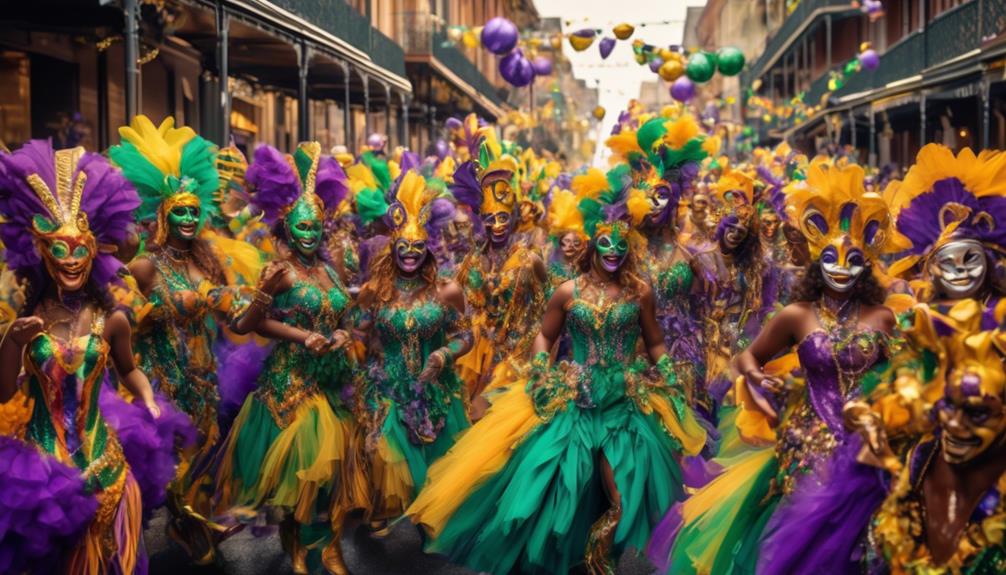
Mardi Gras, traditionally celebrated as a period of feasting before the fasting of Lent, holds religious significance for many Christians. This feast before fasting is a time-honored tradition that symbolizes the impending period of self-discipline and reflection. The significance of this pre-Lenten feasting lies in its representation of the balance between indulgence and restraint, a theme deeply rooted in religious teachings.
Here are a few aspects to consider:
- Celebration of Abundance: During Mardi Gras, the emphasis is on abundance and revelry, reflecting the joy and gratitude for the bountiful gifts bestowed by the divine. It's a time to partake in the richness of life and celebrate the blessings received.
- Camaraderie and Community: The feasting during Mardi Gras fosters a sense of togetherness and unity within the community, as people come together to share meals and festivities. This communal gathering underscores the values of fellowship and compassion, integral to religious teachings.
- Spiritual Preparation: The period of feasting before fasting serves as a spiritual preparation, allowing individuals to fully appreciate the forthcoming period of introspection and sacrifice. It provides a contrast that highlights the significance of moderation and self-discipline.
This tradition of feasting before fasting encapsulates the essence of Mardi Gras, offering a profound reminder of the religious teachings surrounding balance and spiritual readiness.
Cultural Adaptations
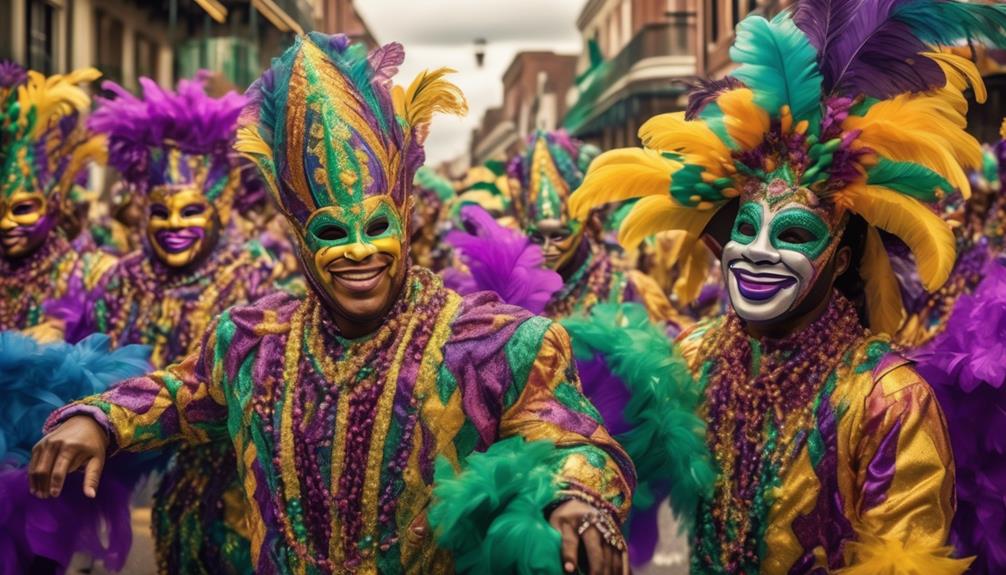
Cultural adaptations of the pre-Lenten feasting tradition surrounding Mardi Gras demonstrate the dynamic interplay between religious customs and local customs, reflecting the diverse ways in which communities have incorporated and personalized this ritual. These adaptations are influenced by a complex web of cultural factors, including historical context, geographical location, and the demographics of the community. The religious significance of Mardi Gras is often imbued with the cultural influences of the region, resulting in a rich tapestry of traditions that vary from place to place.
The cultural adaptations of Mardi Gras are a testament to the fluidity of religious practices and their ability to evolve within different societal contexts. In some regions, Mardi Gras has merged with local cultural practices, creating a unique blend of religious and secular festivities. These adaptations not only highlight the resilience of religious traditions but also underscore the importance of cultural sensitivity and inclusivity within communities.
Christian Celebrations

As we explore the religious significance of Mardi Gras, it's essential to examine the Christian celebrations that are deeply intertwined with this festive tradition.
One of the key aspects to consider is the role of Mardi Gras as a period of preparation for Lent, a time of fasting and reflection in the Christian calendar.
Additionally, understanding the historical and cultural significance of Carnival traditions within the context of Christian celebrations will provide valuable insights into the religious roots of Mardi Gras.
Lenten Preparation
Preparations for Lent involve a period of spiritual reflection and self-examination, as Christians seek to align themselves with the teachings of Jesus Christ. During this time, we engage in Lenten reflection and fasting practices, which are essential components of our preparation for the Lenten season.
Here's how we approach this period of spiritual preparation:
- Introspective Reflection: We take time to reflect on our actions, thoughts, and relationship with God, seeking to identify areas where we can grow spiritually and become more aligned with Christian principles.
- Fasting and Abstinence: We practice self-discipline through fasting and abstaining from certain luxuries, reminding ourselves of the sacrifices made by Jesus Christ and focusing on spiritual nourishment rather than material indulgence.
- Prayer and Almsgiving: We intensify our prayer life, seeking a deeper connection with God, and engage in acts of charity and giving to those in need, fostering a spirit of generosity and compassion.
Through these practices, we aim to enter the Lenten season with a renewed sense of spiritual purpose and commitment to our faith.
Carnival Traditions
Incorporating vibrant colors, lively music, and exuberant dancing, Carnival traditions are deeply rooted in the rich tapestry of Christian celebrations, marking a period of festivity and revelry before the solemn observance of Lent.
One of the most captivating aspects of Carnival is the array of elaborate carnival costumes that participants don, each outfit reflecting a unique blend of cultural influences and historical significance. These costumes, adorned with feathers, sequins, and vibrant fabrics, symbolize the joy and freedom associated with the Carnival season.
Another integral part of Carnival is the extravagant parade floats, which are meticulously crafted to depict various themes, often incorporating religious motifs and symbols. These floats, accompanied by the pulsating rhythm of marching bands, add to the immersive and jubilant atmosphere of Carnival, creating a spectacle that engages participants and observers alike.
Spiritual Reflection
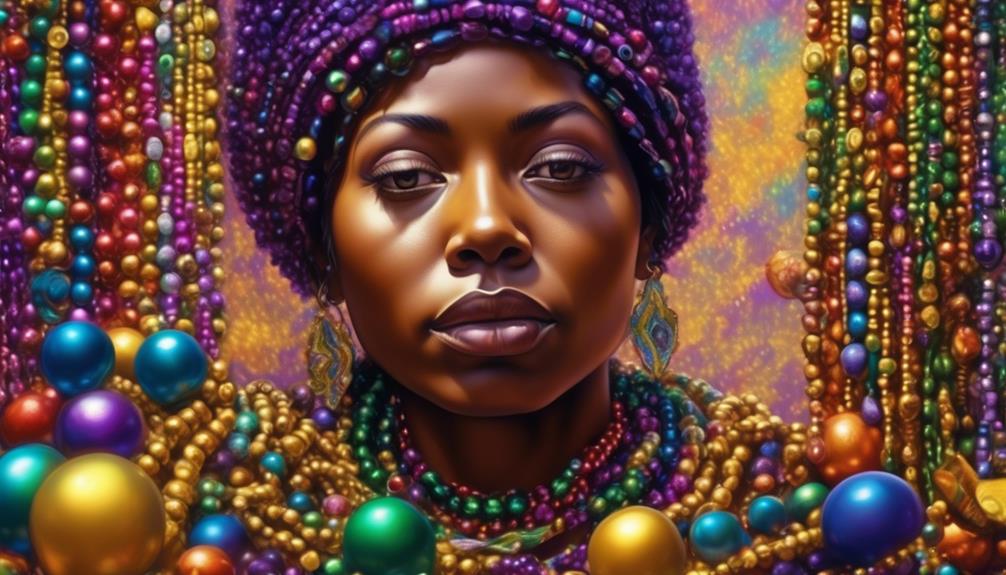
The spiritual essence of Mardi Gras permeates the experience, inviting participants to engage in profound introspection and contemplation. Embracing the meditative practice of Mardi Gras allows for spiritual growth and self-discovery.
Here are three ways in which the celebration fosters spiritual reflection:
- Community Connection: Mardi Gras brings people together in a shared celebration, fostering a sense of unity and interconnectedness. Engaging in the festivities allows individuals to reflect on their place within the community and their relationships with others.
- Symbolism and Ritual: The rich symbolism and ritualistic elements of Mardi Gras provide opportunities for deep reflection. From the vibrant colors of the costumes to the symbolic significance of the parades and floats, participants can contemplate the spiritual meanings behind these traditions.
- Renewal and Transformation: Mardi Gras is a time for renewal and transformation, both spiritually and personally. The introspective nature of the celebration encourages individuals to reflect on their own personal growth and the potential for positive change in their lives.
Engaging in these aspects of Mardi Gras can lead to a heightened sense of spiritual awareness and a deeper connection to one's inner self and the world around them.
Mardi Gras Practices

What are the traditional and contemporary practices observed during Mardi Gras celebrations, and how do they contribute to the cultural and religious significance of the event?
Mardi Gras practices encompass a rich tapestry of traditions that highlight the festive and spiritual dimensions of the celebration. One of the most iconic customs is the donning of elaborate Mardi Gras costumes. These costumes, often featuring vibrant colors and intricate designs, symbolize the temporary suspension of social norms and the embrace of revelry and merrymaking.
Additionally, the creation and display of parade floats play a pivotal role in Mardi Gras festivities. These floats, adorned with ornate decorations and thematic elements, serve as a visual representation of the diverse cultural and religious influences that shape Mardi Gras.
Furthermore, the act of participating in or observing these parades fosters a sense of community and shared celebration, reinforcing the communal aspect of this religious event. By engaging in these practices, individuals not only express their cultural identity but also reaffirm the collective spirituality that underpins Mardi Gras.
Frequently Asked Questions
How Do Different Religious Denominations Celebrate Mardi Gras?
Different religious denominations celebrate Mardi Gras with specific religious customs and cultural traditions. Each denomination adds its own unique flair to the celebration, incorporating their beliefs and practices.
These religious customs often intertwine with the cultural traditions of the local community. For example, some denominations may hold religious processions or feasts, while others may emphasize prayer and reflection.
The diverse ways in which different denominations celebrate Mardi Gras contribute to the rich tapestry of this festive occasion.
Are There Any Specific Religious Rituals or Prayers Associated With Mardi Gras?
Religious rituals associated with Mardi Gras vary among different denominations, but common practices include attending church services, participating in prayer traditions, and engaging in acts of repentance and reflection.
These rituals often serve as a way to prepare for the Lenten season and honor the religious significance of Mardi Gras.
While specific prayers may differ, the observance of religious customs and traditions remains an integral part of the celebration for many individuals and communities.
What Is the Significance of the Colors Purple, Green, and Gold in Mardi Gras Celebrations?
Symbolic colors of purple, green, and gold in Mardi Gras celebrations have deep cultural origins.
Purple represents justice, green symbolizes faith, and gold signifies power.
These traditional customs have evolved into modern interpretations, reflecting the festive spirit of Mardi Gras.
The vibrant hues are a visual feast, capturing the essence of joy and celebration that defines this colorful festival.
The vivid colors add an enchanting touch to the lively and jubilant atmosphere of Mardi Gras.
How Has Mardi Gras Been Adapted and Celebrated in Non-Christian Cultures?
Adapted celebrations of Mardi Gras have been influenced by diverse cultural traditions, resulting in unique and vibrant expressions. Cultural influences have shaped the festivities, leading to varied interpretations and practices.
These adaptations reflect the dynamic nature of Mardi Gras, showcasing the rich tapestry of global celebrations. Non-Christian cultures have embraced and integrated the spirit of Mardi Gras, bringing their own customs and rituals to create a mosaic of joyful and colorful festivities.
Are There Any Specific Religious Teachings or Lessons Associated With Mardi Gras?
Religious teachings associated with Mardi Gras vary, reflecting its cultural significance. The holiday often symbolizes the transition from indulgence to repentance, aligning with the Christian observance of Lent. Religious traditions emphasize this period as a time for reflection, sacrifice, and spiritual renewal. The vibrant festivities, marked by parades and feasts, are deeply rooted in symbolic practices, such as the use of purple, green, and gold to represent justice, faith, and power respectively. These Mardi Gras color meanings Catholic underscore the intertwining of faith and festivity, highlighting the spiritual undertones of the celebration amidst its exuberance.
Lessons of humility, self-reflection, and the pursuit of spiritual growth are intertwined with the festivities.
Mardi Gras also holds religious significance for some as a time for communal worship and prayer.
Its unique blend of religious and cultural elements makes it a rich and complex celebration.
Conclusion
In conclusion, the religious significance of Mardi Gras is deeply rooted in Christian traditions and serves as a time of spiritual reflection and celebration before the start of Lent.
For example, many Christians around the world participate in the traditional Shrove Tuesday practices of confession and repentance before the Lenten season.
Mardi Gras continues to be a unique blend of cultural and religious observances, providing a rich tapestry of traditions and beliefs.
- About the Author
- Latest Posts
Introducing Ron, the home decor aficionado at ByRetreat, whose passion for creating beautiful and inviting spaces is at the heart of his work. With his deep knowledge of home decor and his innate sense of style, Ron brings a wealth of expertise and a keen eye for detail to the ByRetreat team.
Ron’s love for home decor goes beyond aesthetics; he understands that our surroundings play a significant role in our overall well-being and productivity. With this in mind, Ron is dedicated to transforming remote workspaces into havens of comfort, functionality, and beauty.
Mardi Gras Decoration
Mardi Gras Decor Ideas: Bringing New Orleans Flair to Your Home
Get inspired with vibrant Mardi Gras decor ideas to transform your home into a festive New Orleans celebration that your guests won’t forget!
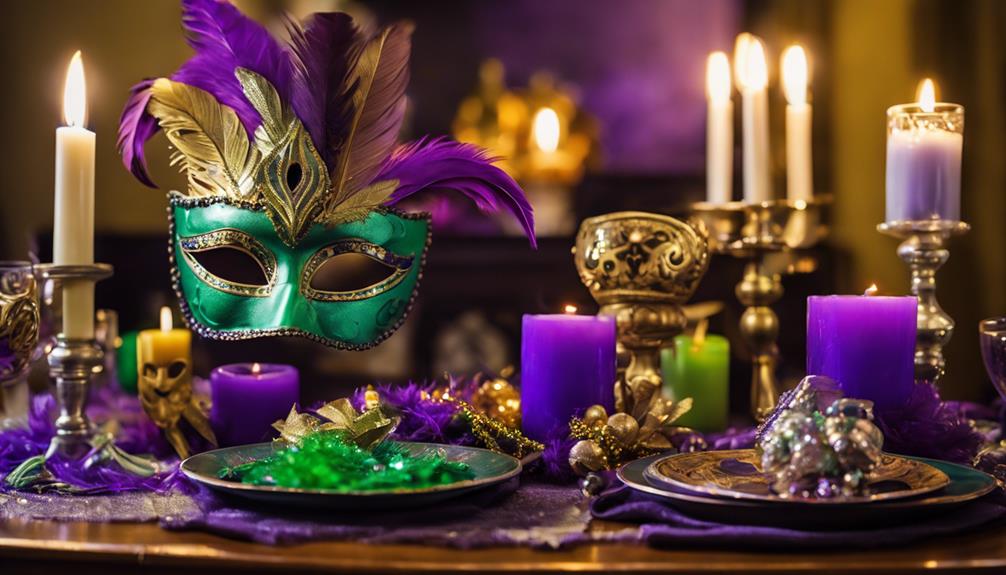
To bring the vibrant flair of New Orleans Mardi Gras into your home, embrace bold colors like purple, green, and gold. Add festive elements like masks, beads, and king cake to create an authentic atmosphere. Use a crisp white tablecloth to highlight colorful dishes and DIY decorations, like painted glassware or custom banners. Engage your guests with a themed coffee bar and vibrant centerpieces. Don't forget to design your space for conversation and fun. With these ideas, your Mardi Gras celebration will be unforgettable. Explore more creative tips to enhance your festive ambiance further!
Key Takeaways
- Embrace bold colors like purple, green, and gold to capture the essence of Mardi Gras and create a festive atmosphere.
- Incorporate traditional elements such as masks, beads, and king cake to enhance authenticity and celebrate New Orleans culture.
- Use a crisp white tablecloth as a backdrop to make vibrant decorations pop for an eye-catching table setting.
- Engage in DIY projects, like painting glassware and creating bead curtains, to add a personal touch to your decor.
Celebrate With Bold Colors
To truly celebrate Mardi Gras, you should embrace bold colors like purple, green, and gold, which capture the essence of this vibrant festival.
These bright colors not only symbolize justice, faith, and power, but they also bring an energetic flair to your home. Start with simple decorating ideas that incorporate these hues in your interior design. You might love to see table settings adorned with vibrant napkins and centerpieces that reflect the spirit of Mardi Gras.
Consider DIY projects that are budget friendly, like painting glassware in these festive colors or creating custom banners.
Adding colorful masks and beads as decorative accents can also enhance the festive theme, evoking the excitement of Mardi Gras parades right in your living space.
Don't overlook the power of floral arrangements; choose seasonal blooms in bold hues to serve as focal points in your home.
With these decorating ideas, you'll create a lively atmosphere that truly celebrates the spirit of Mardi Gras, inviting friends and family to join in the fun.
Essential Mardi Gras Elements

What essential elements should you include to create an authentic Mardi Gras celebration?
Start with a crisp white tablecloth as your base to enhance the vibrant colors of your decor. Incorporate classic Mardi Gras elements like king cake, masks, and beads, which capture the spirit of this festive occasion. Use simple white dishes for versatility and consider personalizing them with DIY plate decorations using glass paint markers.
To elevate your dining experience, add vintage candleholders and colorful drip candles, creating a warm and inviting ambiance. Gold napkins paired with Mardi Gras beads as decorative napkin rings will bring a touch of elegance to your table setting.
Don't forget about the festive beverages! Serve kids Abita Root Beer while adults can enjoy traditional offerings like Café Du Monde coffee and beignets.
These essential components won't only enhance the overall look of your Mardi Gras celebration but also immerse your guests in the rich cultural heritage of New Orleans. By including these elements, you'll create a lively atmosphere that captures the joy and excitement of Mardi Gras.
DIY Decor Projects

Enhancing your Mardi Gras celebration can be as simple as incorporating fun DIY decor projects that reflect the festive spirit of the occasion. These projects not only add a vibrant touch to your home but also create a warm and inviting atmosphere for your guests.
Here are some easy DIY decor ideas to get you started:
- Festive Bead Curtains: Create a curtain using strands of beads from Dollar Tree for just $3. This eye-catching display works great for entryways or windows.
- Themed Coffee Bar Sign: Paint a six-inch canvas with fun designs and add voodoo doll stitches for a unique sign that brings a playful touch to your coffee bar.
Tips for Hosting Parties

Hosting a memorable Mardi Gras party starts with a thoughtful layout that encourages conversation and keeps guests engaged. Assess your space and arrange furniture to create a welcoming atmosphere. Consider how guests will flow through the area, ensuring accessibility while mingling.
Use bold colors and festive decorations, like masks and beads, to enhance the celebratory spirit of your gathering. Think about incorporating multifunctional spaces—set up areas for dining, socializing, and entertainment. This allows guests to enjoy varied activities throughout the party.
To achieve cohesive decor, utilize themed elements such as a king cake centerpiece and vintage candleholders adorned with colorful candles. These details tie the room together and create a festive vibe.
As you're hosting parties, take note of how guests interact with your space. This can reveal areas for improvement, helping you make adjustments for future gatherings.
Incorporating Personal Style

Personalizing your Mardi Gras decor not only reflects your unique style but also makes your celebration feel more intimate and special. By showcasing unique treasures, like heirlooms and colorful pieces, you can weave your history into the festivities. Embrace bold colors—purple, green, and gold—to create lively spaces that resonate with your love for the holiday.
Here are some ideas to incorporate your personal taste:
- Use simple white dishes as a versatile base, allowing you to customize with themed elements like masks and beads.
- Engage in DIY projects such as painting personalized plates or crafting themed signs to add character and authenticity to your decor.
Frequently Asked Questions
When Should I Start Decorating for Mardi Gras?
You should start decorating for Mardi Gras at least a week before the event. This way, you'll have plenty of time to gather supplies and create vibrant displays that capture the festive spirit.
How Do You Have a Mardi Gras Party at Home?
To host a Mardi Gras party at home, you'll need vibrant colors, festive foods, lively music, and engaging activities. Set the scene, serve traditional dishes, and encourage creativity to create an unforgettable celebration.
How Do You Decorate for Mardi Gras?
To decorate for Mardi Gras, use vibrant colors like purple, green, and gold. Incorporate masks, beads, and themed vignettes. Consider DIY projects to personalize your space, adding vintage candleholders for an elegant, festive touch.
Conclusion
As you deck your home in vibrant purples, greens, and golds, it's funny how a celebration rooted in joy can remind you of life's chaos.
You might think you're just hanging beads and masks, but in reality, you're weaving a tapestry of memories, laughter, and community.
So, whether you're hosting a grand party or enjoying a quiet moment, remember: it's the spirit of Mardi Gras that transforms your space, turning your home into a joyous escape. With a blend of vibrant decorations and personal touches, you can create an ambiance that embodies both festivity and comfort. Incorporate the ultimate relaxing sanctuary tips by layering soft lighting, cozy seating areas, and soothing scents to balance the lively energy of the celebration. This way, your home becomes a perfect fusion of exuberance and tranquility, making the Mardi Gras experience truly unforgettable.
- About the Author
- Latest Posts
Introducing Ron, the home decor aficionado at ByRetreat, whose passion for creating beautiful and inviting spaces is at the heart of his work. With his deep knowledge of home decor and his innate sense of style, Ron brings a wealth of expertise and a keen eye for detail to the ByRetreat team.
Ron’s love for home decor goes beyond aesthetics; he understands that our surroundings play a significant role in our overall well-being and productivity. With this in mind, Ron is dedicated to transforming remote workspaces into havens of comfort, functionality, and beauty.

Some people may argue that Mardi Gras is just a festival of partying and extravagance, completely disconnected from any religious meaning. Nevertheless, when delving into the historical origins and cultural customs of this yearly event, it becomes clear that Mardi Gras has strong ties to religious symbolism and practices. Historically, Mardi Gras traces its roots back to Christian traditions, particularly the period of feasting and celebration before the solemn season of Lent. The colors, parades, and festivities often symbolize deeper themes of repentance, indulgence, and preparation for spiritual reflection. In this way, a modern Mardi Gras party explained through its origins reveals a blending of sacred and secular traditions that continue to shape its celebratory nature.
From its origins as a Christian feast day to its connections with the Lenten season and spiritual practices, Mardi Gras holds a significant religious significance. But how exactly did this festive event become associated with religious observances?
Stay tuned as we uncover the religious underpinnings of Mardi Gras and its relevance in modern-day celebrations.
Key Takeaways
- Mardi Gras has pagan roots and was incorporated into the Christian liturgical calendar.
- The colors of Mardi Gras (purple, green, and gold) have Christian symbolism.
- Mardi Gras marks the beginning of the Christian liturgical season of fasting and reflection.
- Masks, throws, and king cakes all have religious symbolism in Mardi Gras celebrations.
Origins of Mardi Gras
The origins of Mardi Gras date back to ancient pagan celebrations and were later incorporated into Christian traditions. Mardi Gras, French for 'Fat Tuesday,' has deep pagan roots, originally linked to Roman and Greek festivals celebrating the arrival of spring and fertility. These pagan festivities were eventually adapted by the Christian church as a way to incorporate and reframe these cultural celebrations within the context of Christian beliefs.
Over time, the carnival-like atmosphere and traditions of Mardi Gras became intertwined with the Christian liturgical calendar, specifically the period of feasting and celebration before the solemnity of Lent.
The cultural significance of Mardi Gras lies in its ability to bring people together in joyous celebration before the introspective and penitent season of Lent. It has become a time for communities to come together, feast, and revel in the richness of life before a period of sacrifice and reflection. This celebration reflects the deep human need for both communal joy and personal growth, making Mardi Gras a holiday with profound spiritual and cultural significance. The Mardi Gras celebration purpose extends beyond mere festivity; it serves as a bridge connecting the sacred and the secular, allowing individuals to embrace both joy and reverence. Through vibrant parades, music, and shared traditions, it reinforces a sense of belonging and cultural identity within diverse communities. Ultimately, Mardi Gras reminds us of the balance between indulgence and discipline, highlighting the cyclical nature of human experiences.
Christian Traditions and Symbolism

Christian traditions and symbolism play a significant role in the evolution and observance of Mardi Gras. The colors of Mardi Gras, purple, green, and gold, are steeped in Christian symbolism. Purple symbolizes justice, green represents faith, and gold signifies power. These colors reflect the religious significance of Mardi Gras, reminding us of our Christian values and calling us to live out these virtues.
The practice of consuming rich and indulgent foods before the fasting period of Lent also holds religious connotations. This tradition, known as 'Fat Tuesday,' encourages us to reflect on the upcoming period of self-discipline and spiritual growth. It serves as a reminder of Christ's sacrifice and the importance of repentance and inner renewal.
Furthermore, Mardi Gras is deeply tied to Christian traditions through its association with the liturgical calendar. The observance of Ash Wednesday, which marks the beginning of Lent, is intrinsically linked to the revelry of Mardi Gras. This juxtaposition of celebration and solemnity underscores the profound religious significance of Mardi Gras within the Christian faith.
Relationship With the Lenten Season
As believers, we closely connect Mardi Gras with the upcoming Lenten season, a period of reflection and spiritual growth. Mardi Gras, also known as Fat Tuesday, falls just before Ash Wednesday, which marks the beginning of Lent. This connection is deeply rooted in Catholic tradition, where Mardi Gras serves as a final celebration before the solemn and reflective season of Lent. It's a time for us to prepare our hearts and minds for the Lenten journey ahead, where we focus on prayer, fasting, and almsgiving.
Lenten preparation starts with the joyous festivities of Mardi Gras, reminding us of the upcoming season's call to serve others with humility and compassion. As we engage in the revelry of Mardi Gras, we're also mindful of the need to embark on a period of self-examination and spiritual discipline during Lent. This dual experience reinforces the connection between the two, reminding us of the importance of balancing celebration with introspection and service.
Our relationship with the Lenten season isn't just about personal reflection but also about how we can better serve those around us. This connection between Mardi Gras and Lent deepens our understanding of the call to love and serve others, making the transition from celebration to spiritual growth seamless and purposeful.
Religious Observances and Practices

In our religious observances and practices, we engage in acts of devotion and service that deepen our spiritual connection and foster a sense of community. These practices are essential for nurturing our faith and strengthening our bond with each other.
Here are some key aspects of our religious observances and practices:
- Prayer Rituals
- We believe in the power of prayer to seek guidance, express gratitude, and offer intercession for others.
- Through regular prayer rituals, we cultivate a deeper connection with the divine and find solace in times of need.
- Service to Others
- Serving others is integral to our religious beliefs, and we actively seek opportunities to extend compassion and support to those in need.
- By engaging in acts of service, we emulate the values of our faith and contribute to the well-being of our community.
- Religious Festivals
- Religious festivals hold great significance in our spiritual journey, providing opportunities for communal worship, reflection, and celebration.
- These festivals offer a chance for us to come together as a community, reaffirm our shared beliefs, and find inspiration in the collective expression of faith.
Our religious observances and practices are a testament to our commitment to serving others and nurturing our spiritual connection through prayer rituals and participation in religious festivals.
Spiritual Significance in Modern Celebrations
Amidst the vibrant festivities of modern celebrations, we find a deep and enduring spiritual significance that unites us in shared reverence and reflection.
In today's Mardi Gras, the spiritual aspect has evolved to encompass a broader, more inclusive understanding. Modern interpretations of Mardi Gras emphasize the cultural significance of coming together as a community to celebrate life, joy, and resilience.
It's a time when people seek to uplift one another, embodying the values of compassion, kindness, and charity. This spiritual underpinning is evident in the various community service initiatives that have become integral to Mardi Gras celebrations.
From volunteering at local shelters to organizing food drives, there's a growing emphasis on using this festive occasion as an opportunity to serve and support those in need.
In this way, Mardi Gras has become not only a time of revelry but also a period of meaningful connection and service to others, reflecting the enduring spiritual significance that continues to shape modern celebrations.
Frequently Asked Questions
How Do Non-Christian Religions and Cultures Celebrate Mardi Gras?
We celebrate Mardi Gras with non-Christian celebrations and cultural influences. People of various faiths and backgrounds come together to participate in the festivities.
Non-Christian traditions such as parades, mask-wearing, and indulging in rich foods are integrated into the celebrations.
Cultural influences from different regions and ethnicities add vibrant and diverse elements to the Mardi Gras festivities, creating a unique and inclusive experience for everyone involved.
What Is the Role of Mardi Gras in the History of Religious Persecution and Tolerance?
Mardi Gras has a significant role in the history of religious tolerance and has been tied to historical persecution. The celebration represents a time of religious freedom and acceptance, where diverse cultures come together in unity.
The festivities reflect the resilience of communities in the face of religious adversity. Through the ages, Mardi Gras has stood as a symbol of religious tolerance and the triumph of the human spirit over oppression.
How Do Different Christian Denominations Interpret the Religious Significance of Mardi Gras?
Different Christian denominations interpret the religious significance of Mardi Gras differently. These interpretation differences stem from varying theological beliefs and historical traditions.
The religious significance celebrations can range from solemn reflections on the upcoming Lenten season to joyous celebrations of the last moments before the fasting period.
Understanding these differences allows us to appreciate the diverse ways in which different denominations honor this important religious holiday.
Are There Any Specific Prayers or Rituals Associated With Mardi Gras in Religious Observances?
Prayer traditions and ritual practices are integral to religious observances of Mardi Gras. Many denominations hold special prayer services and engage in symbolic rituals as part of their Mardi Gras celebrations. These can include praying for forgiveness, participating in processions, and observing fasting and abstinence.
These practices are intended to prepare for the solemn season of Lent and reflect on the spiritual significance of Mardi Gras.
How Have Modern Interpretations of Spirituality and Mindfulness Influenced the Way Mardi Gras Is Celebrated in Religious Communities?
Modern interpretations of spirituality and secular influence have shaped the way Mardi Gras is celebrated in religious communities.
Spiritual mindfulness has led to a greater emphasis on reflection and serving others during this cultural celebration.
In some religious observances, Mardi Gras has evolved to incorporate elements of community service and outreach, reflecting a deeper connection to the principles of faith and compassion in the modern context.
Conclusion
In conclusion, Mardi Gras is a religious holiday rooted in rich traditions and symbolism. Its origins and observances are deeply tied to the Christian faith, particularly in preparation for the Lenten season.
The spiritual significance of Mardi Gras is still evident in modern celebrations, showcasing the enduring connection between faith and festivity.
So let's remember the religious roots and revel in the spiritual significance of this colorful and vibrant holiday!
- About the Author
- Latest Posts
Introducing Ron, the home decor aficionado at ByRetreat, whose passion for creating beautiful and inviting spaces is at the heart of his work. With his deep knowledge of home decor and his innate sense of style, Ron brings a wealth of expertise and a keen eye for detail to the ByRetreat team.
Ron’s love for home decor goes beyond aesthetics; he understands that our surroundings play a significant role in our overall well-being and productivity. With this in mind, Ron is dedicated to transforming remote workspaces into havens of comfort, functionality, and beauty.
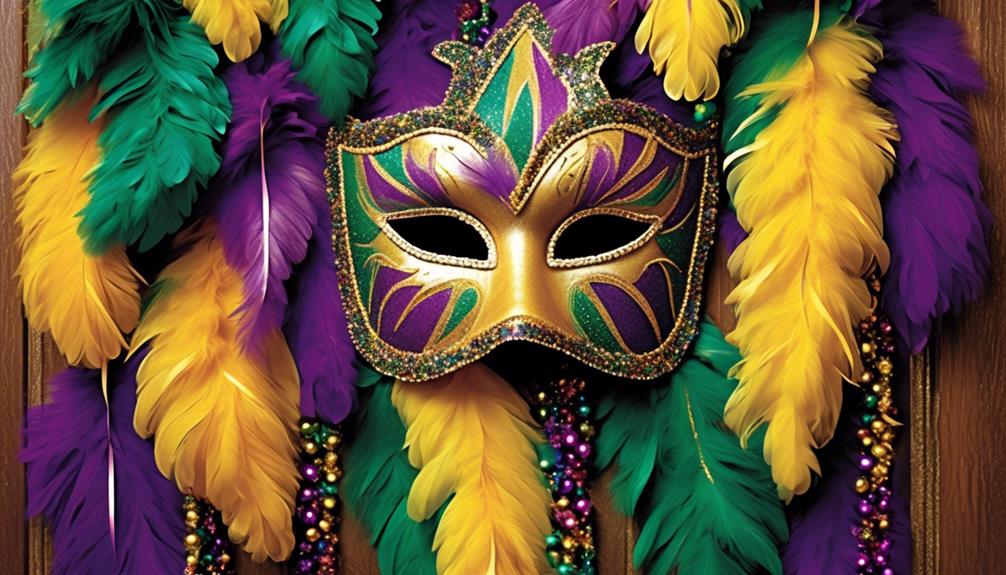
When it comes to decorating for Mardi Gras, we often struggle to find a balance between making a memorable impact and sticking to a budget. The key is to blend boldness and elegance, creating a festive atmosphere that embodies the essence of the holiday without being too overwhelming.
With a few simple yet creative ideas, you can transform any space into a festive Mardi Gras wonderland that will have everyone feeling the festive spirit.
Key Takeaways
- Mardi Gras decorations can include masks, jester hats, bead garlands, feather boas, and glittery table centerpieces.
- Masks can be painted with bold patterns and designs using acrylic paints and glitter.
- Jester hats can be created using colorful cardstock, glitter, bells, and elastic bands.
- Bead garlands can be used to decorate parade floats or create a festive atmosphere, and can also be used to create bead bracelets, necklaces, belts, and headpieces.
Colorful Mardi Gras Masks
Let's get ready to create vibrant and eye-catching Mardi Gras masks that will add a burst of color and excitement to our decorations. Mask painting is a delightful activity that allows us to express our creativity and add a personal touch to the festive ambiance.
To start, gather a variety of plain masks, acrylic paints, paintbrushes, glitter, feathers, and other embellishments. Begin by brainstorming designs and color schemes. Once you have a plan in mind, use the paint to create bold patterns, intricate designs, or even abstract art on the masks. Experiment with different brush strokes and techniques to achieve the desired effect.
Don't forget to let each layer of paint dry before adding new elements to avoid smudging or blending colors unintentionally. As the base design takes shape, explore mask decorating techniques such as adding glitter for a touch of sparkle or attaching feathers to create a dramatic effect.
These masks won't only enhance our decorations but also bring joy to those who see them. Let's share this creative experience with others and spread the vibrant spirit of Mardi Gras!
Festive Bead Garlands
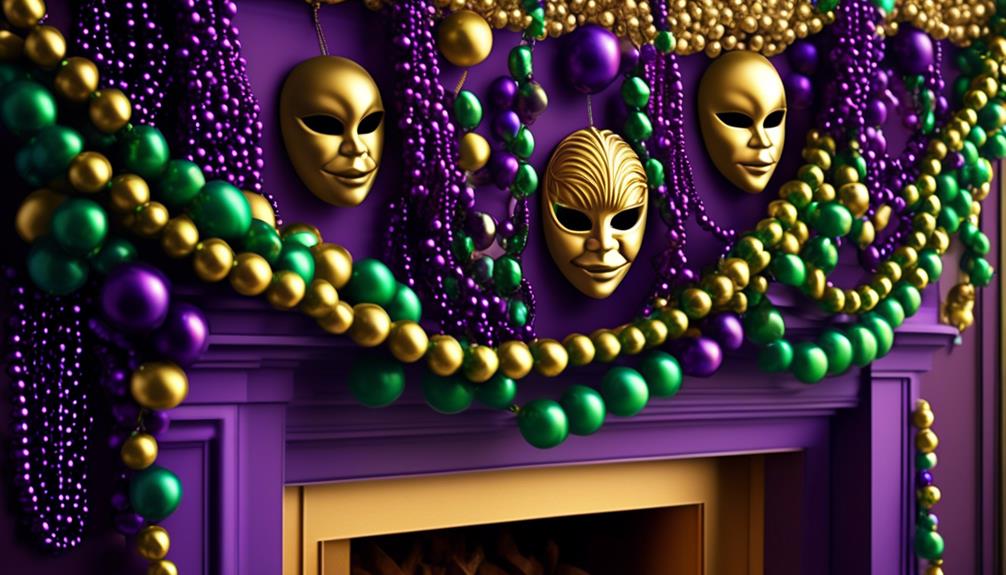
After creating our colorful Mardi Gras masks, we are now ready to dive into the world of festive bead garlands, adding a touch of elegance and flair to our decorations. Bead crafting techniques can elevate the ambiance of any Mardi Gras celebration. To assist you in this endeavor, we've compiled a selection of DIY costume accessories and parade float decorations that will surely delight your guests and spectators.
| Bead Crafting Techniques | Party Favor Ideas | DIY Costume Accessories | Parade Float Decorations |
|---|---|---|---|
| Stringing beads to create stunning garlands | Giving away homemade bead bracelets as party favors | Crafting bead necklaces, belts, and headpieces | Using bead garlands to adorn parade floats and create a festive atmosphere |
Vibrant Feather Boas
Let's talk about the vibrant feather boas!
When it comes to Mardi Gras decorations, feather boas are a must-have.
We'll explore the wide array of feather boa colors, embellishments, and creative hanging ideas to make your Mardi Gras celebration truly unforgettable.
Feather Boa Colors
What are the most vibrant colors available for feather boas to create eye-catching Mardi Gras decorations? When it comes to boa color trends, it's all about bold and lively hues that capture the festive spirit of Mardi Gras.
Here are some vibrant feather boa colors that will make your decorations stand out:
- Emerald Green: This rich and lush shade of green represents the traditional color of Mardi Gras and will instantly bring a touch of elegance to your decor.
- Royal Purple: A deep and regal purple adds a sense of grandeur to your Mardi Gras decorations, symbolizing justice and power.
- Golden Yellow: Bright and radiant, a golden yellow feather boa brings a vibrant burst of energy and joy to your festive arrangements.
These vibrant feather boa colors will elevate your Mardi Gras decorations and create a captivating visual experience for all.
Boa Embellishments
As we explore boa embellishments, we'll incorporate vibrant feather boas, such as emerald green, royal purple, and golden yellow, to infuse our Mardi Gras decorations with elegance and energy.
When creating a boa costume, these feather boas can be draped around hats, sewn onto dresses, or used as sashes for a fun and festive look.
For parade floats, consider using feather boas to adorn the edges, creating a lavish and eye-catching display. To make the most of these boas, intertwine different colors, layer them for a fuller effect, and mix and match textures for added visual appeal.
Additionally, feather boas can be used to create stunning table centerpieces or to embellish masks, adding a touch of glamour to your Mardi Gras celebration.
Boa Hanging Ideas
To create striking boa hanging decorations, select vibrant feather boas in rich colors such as emerald green, royal purple, and golden yellow to infuse your space with the lively spirit of Mardi Gras.
For an eye-catching boa display, consider these hanging arrangements:
- Boa Curtain: Drape long strands of feather boas across doorways or windows to create a dazzling curtain effect, welcoming guests with a festive flair.
- Boa Chandelier: Craft a stunning boa chandelier by suspending multiple boas from a wire frame or hoop, adding a touch of elegance and whimsy to your Mardi Gras festivities.
- Boa Garland: String together colorful feather boas to make a vibrant garland that can be hung along staircases, mantels, or tables, bringing a festive and playful atmosphere to any space.
These hanging arrangements will elevate your Mardi Gras decor and make your celebration truly unforgettable.
Glittery Table Centerpieces
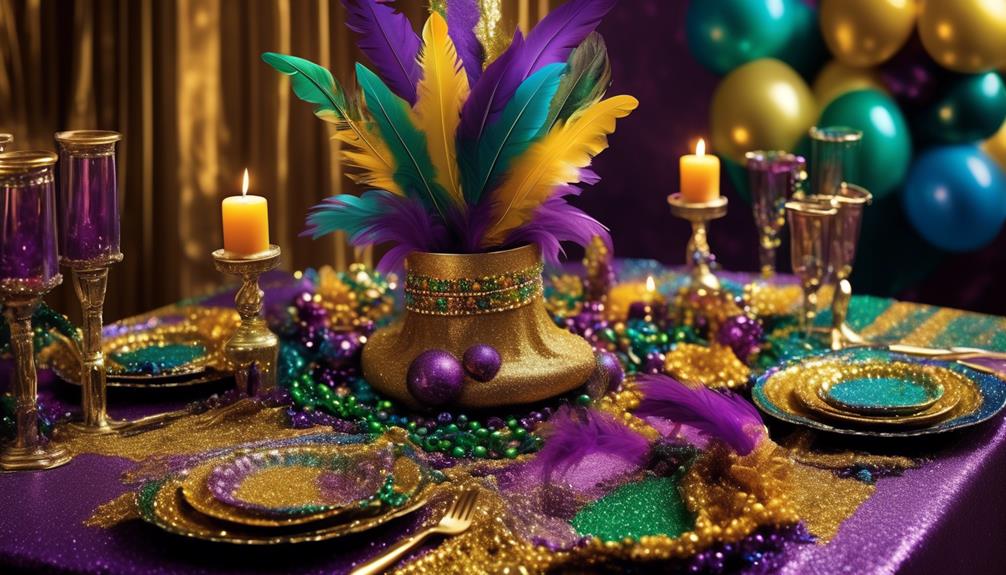
Let's talk about creating stunning glittery table centerpieces for your Mardi Gras celebration.
First, we'll cover the materials needed to bring these dazzling decorations to life.
Then, we'll provide step-by-step assembly instructions to ensure your centerpieces shine bright.
Materials Needed
We can create stunning glittery table centerpieces by gathering clear glass vases, glitter in various colors, mod podge, and paintbrushes for this craft project.
To make these beautiful centerpieces, we can use creative alternatives like recycled glass jars or repurposed wine bottles to serve as the vases. This not only adds a unique touch to the decorations but also provides budget-friendly options.
The glitter in various colors allows for personalization, and the mod podge acts as an adhesive and sealer, ensuring the glitter stays in place.
Paintbrushes are essential for applying the mod podge evenly and precisely onto the vases.
With these materials, we can bring a touch of sparkle and elegance to our Mardi Gras celebration.
Assembly Instructions
Using an assortment of clear glass vases, glitter in various colors, mod podge, and paintbrushes, we can proceed to assemble the glittery table centerpieces for our Mardi Gras celebration.
First, ensure the vases are clean and dry.
Next, apply a coat of mod podge to the outside of the vase using a paintbrush.
Then, sprinkle the glitter onto the mod podge, ensuring it covers the entire surface evenly. For a creative touch, consider mixing different colors of glitter or creating patterns.
Once the glitter is applied, let the vases dry completely.
To prevent the glitter from shedding, seal the glitter with another layer of mod podge.
Allow the vases to dry thoroughly before placing them on the tables.
These centerpieces will surely add a dazzling and festive touch to our Mardi Gras celebration.
Display and Enjoy
With our glittery table centerpieces assembled and dried, we can now showcase them as the sparkling focal point of our Mardi Gras celebration. Here's how to display and enjoy them:
- Place the glittery table centerpieces on the main dining table, ensuring they're evenly spaced to create a stunning visual impact.
- Surround the centerpieces with complementary party supplies such as colorful beads, masks, and feather boas to enhance the festive atmosphere.
- Encourage guests to snap photos with the beautiful DIY crafts and use them as conversation starters, adding an extra touch of charm to the celebration.
Homemade Jester Hats
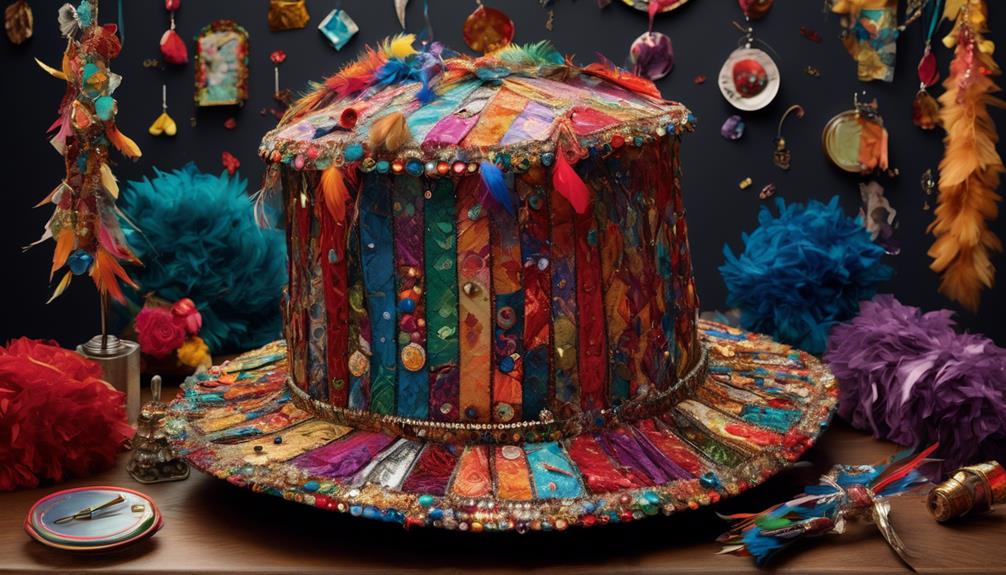
Crafting jester hats at home allows for personalized touches and creativity to shine through, adding a unique and festive flair to your Mardi Gras decorations.
Making DIY costume jester hats can be a fun and rewarding activity for both adults and kids. To start, gather supplies like colorful cardstock, glitter, bells, and elastic bands.
Cut the cardstock into long strips and staple or glue the ends together to form a band that fits around your head. Then, cut out diamond shapes from more cardstock and attach them to the band, alternating colors to create a vibrant, jester-style pattern.
Add glitter and bells for extra pizzazz. For the finishing touch, attach elastic bands to keep the hat in place.
These homemade jester hats can be great additions to your Mardi Gras party favors, and they also provide a delightful activity for guests to engage in during the celebration.
Sparkling Door Wreaths
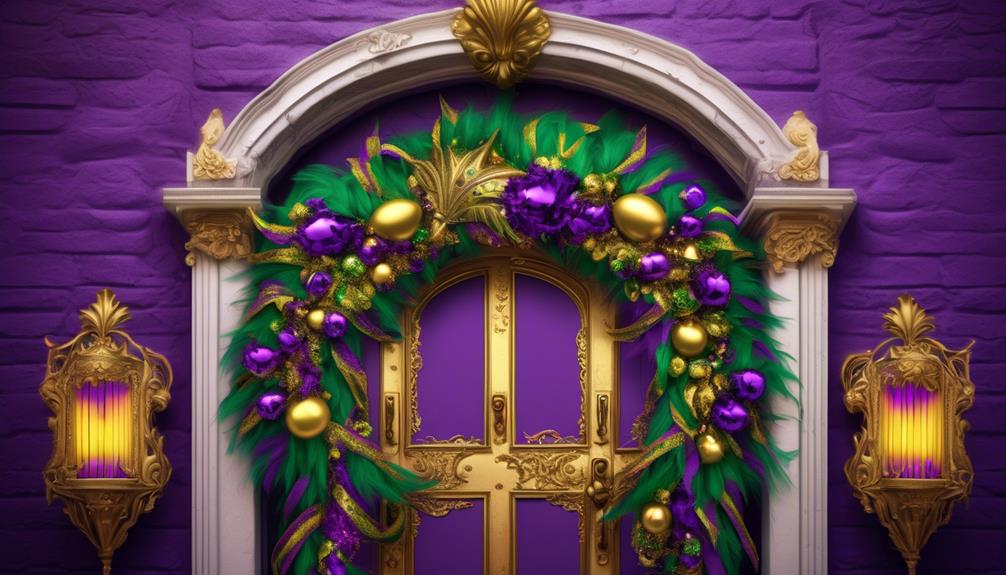
Let's create eye-catching sparkling door wreaths to add a touch of glamour and festivity to your Mardi Gras decor. Making a DIY wreath for Mardi Gras can be a fun and rewarding project. Here are some wreath decorating ideas to help you get started:
- Beaded Elegance: String colorful Mardi Gras beads around a foam or vine wreath base, securing them with hot glue. Add in some shimmering metallic beads for an extra touch of elegance.
- Feathery Flourish: Attach vibrant feathers in green, gold, and purple to the wreath using floral wire or hot glue. Layer the feathers for a lush and extravagant look.
- Glittering Accents: Sprinkle a foam or vine wreath with glitter in Mardi Gras colors. Secure the glitter with a clear sealant spray to prevent it from shedding. Then, add in some glittery Mardi Gras masks, fleur-de-lis ornaments, or decorative picks for a dazzling finish.
Creating your own sparkling door wreaths is a delightful way to showcase your creativity and bring the festive spirit of Mardi Gras to your home.
Masked Balloon Bouquets

After adorning our doors with sparkling wreaths, we can enhance our Mardi Gras decor by creating vibrant and festive masked balloon bouquets. These balloon sculptures add a touch of whimsy and elegance to any masquerade party.
To craft these stunning bouquets, start by selecting an assortment of Mardi Gras colored balloons, such as purple, green, and gold. Use a variety of sizes to add visual interest. Next, inflate the balloons and tie them off, ensuring they're fully inflated for a beautiful effect.
Once you have your balloons ready, attach them to balloon sticks or lightweight wooden dowels. To create the masked effect, attach elegant masquerade masks to the top of each bouquet. Secure the masks by tying them to the sticks with colorful ribbons that complement the balloon colors. Consider adding glitter or sequins to the masks for an extra festive touch.
Arrange the finished balloon bouquets in strategic locations around your party space, such as near the entrance, the dance floor, or the food table. These vibrant and eye-catching decorations will surely delight your guests and elevate the festive atmosphere of your Mardi Gras celebration.
Jazz-Inspired Wall Decor

Exploring the rhythmic and colorful essence of jazz, we can infuse our Mardi Gras decor with captivating and vibrant wall art inspired by the soulful melodies and spirited energy of this musical genre. Jazz music, with its improvisational nature and rich history, provides a perfect backdrop for artistic inspiration as we create stunning wall decor for our Mardi Gras celebrations.
- Musical Notes Mural: Adorn your walls with a larger-than-life mural depicting swirling musical notes in vibrant Mardi Gras colors. Let the notes dance across the wall, capturing the vivacious spirit of jazz music and adding a dynamic focal point to your decor.
- Vintage Album Cover Display: Showcase vintage jazz album covers in stylish frames, creating a gallery wall that pays homage to the classic artistry of the genre. The striking visuals and evocative designs of these album covers will infuse your space with the timeless allure of jazz.
- DIY Jazz-Inspired Art: Get creative and make your own jazz-inspired art pieces using mixed media, incorporating elements like musical instruments, bold colors, and expressive brushstrokes. These unique creations will bring an authentic and personalized touch to your Mardi Gras wall decor, reflecting the improvisational and eclectic nature of jazz.
Frequently Asked Questions
Where Can I Find Affordable Mardi Gras Decorations?
We usually find affordable Mardi Gras decorations at online retailers and local stores. Online retailers offer a wide variety of Mardi Gras decorations at competitive prices, while local stores may have unique and affordable options.
For budget-friendly options, we often opt for DIY decorations. When seeking budget-friendly options, DIY decorations can be a fun and cost-effective way to add a personal touch to your Mardi Gras decor.
Are There Any Traditional Mardi Gras Symbols That I Should Include in My Decorations?
Traditional symbols like fleur-de-lis, masks, and beads are essential for DIY Mardi Gras decorations. Incorporating these symbols can add an authentic touch to your decor. Look for affordable options at craft stores or online to stay within budget.
Get creative with colors and patterns to make your decorations stand out. These symbols will bring the festive Mardi Gras spirit into your home without breaking the bank. Incorporate vibrant purples, greens, and golds—iconic Mardi Gras colors—into streamers, balloons, and table settings for an eye-catching display. You can also craft unique DIY Mardi Gras decorations like mask-themed garlands or bead-covered centerpieces to add a personal touch to your space. With a little imagination and some crafty inspiration, you can transform ordinary materials into festive, budget-friendly decor.
How Can I Incorporate Mardi Gras Decorations Into My Outdoor Space?
We can incorporate Mardi Gras decorations into our outdoor space by creating DIY Mardi Gras themed crafts. Hanging colorful banners, making festive wreaths, and crafting unique yard signs are great ways to bring the Mardi Gras spirit outside.
We can also use traditional Mardi Gras symbols like fleur-de-lis and masks to add authenticity to our outdoor decor.
What Are Some Creative Ways to Display Mardi Gras Decorations in My Home?
We've found that a creative centerpiece is a great way to showcase Mardi Gras decorations in your home.
You can make a DIY garland using colorful beads, feathers, and masks to really bring the festive spirit to any room.
Can I Make My Own Mardi Gras Decorations Using Items I Already Have at Home?
Absolutely, we can create our own Mardi Gras decorations using household items. DIY decorations aren't only budget-friendly, but they also add a personal touch to our celebrations.
By repurposing items like colorful fabric, beads, and paper, we can craft vibrant and festive décor. From handmade masks to garlands, the possibilities are endless.
Let's get creative and infuse our homes with homemade Mardi Gras spirit!
Conclusion
So, let's get ready to jazz up our Mardi Gras celebrations with these fabulous decorations!
With colorful masks, festive garlands, vibrant feather boas, glittery centerpieces, homemade jester hats, sparkling wreaths, masked balloon bouquets, and jazz-inspired wall decor, our party is sure to be a sight to behold.
Let's bring the spirit of Mardi Gras to life with these dazzling and lively decorations that will transform any space into a festive and vibrant celebration!
- About the Author
- Latest Posts
Introducing Ron, the home decor aficionado at ByRetreat, whose passion for creating beautiful and inviting spaces is at the heart of his work. With his deep knowledge of home decor and his innate sense of style, Ron brings a wealth of expertise and a keen eye for detail to the ByRetreat team.
Ron’s love for home decor goes beyond aesthetics; he understands that our surroundings play a significant role in our overall well-being and productivity. With this in mind, Ron is dedicated to transforming remote workspaces into havens of comfort, functionality, and beauty.
-

 Decor1 week ago
Decor1 week agoMaximalist Decor Explained: Embrace More Style
-

 Vetted2 weeks ago
Vetted2 weeks ago15 Best Foot Massagers for Neuropathy to Soothe Your Feet and Relieve Discomfort
-

 Vetted3 weeks ago
Vetted3 weeks ago15 Best Sports Laundry Detergents for Keeping Your Activewear Fresh and Clean
-

 Vetted3 weeks ago
Vetted3 weeks ago15 Best Tall Toilets for Seniors That Combine Comfort and Safety
-

 Vetted4 weeks ago
Vetted4 weeks ago15 Best Dish Scrubbers to Keep Your Kitchen Sparkling Clean
-

 Vetted2 days ago
Vetted2 days ago15 Best Cleaners for Fiberglass Showers to Keep Your Bathroom Sparkling Clean
-

 Decor4 weeks ago
Decor4 weeks agoWhat Is Eclectic Home Decor
-
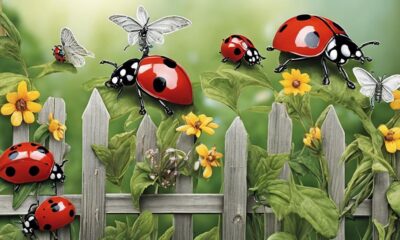
 Vetted1 week ago
Vetted1 week ago15 Best Organic Pest Control Solutions for a Naturally Pest-Free Home

























